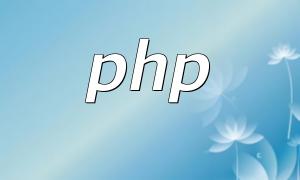Typecho is a simple and easy-to-use PHP blog program that offers rich theme customization features, allowing users to easily personalize their websites. This article will guide you through the steps to customize a website theme using PHP and Typecho, and provide code examples for better understanding.
First, create a new theme folder in the themes directory of Typecho (e.g., "mytheme"). Inside this folder, create a subfolder with the same name as the theme (e.g., "mytheme"). In this subfolder, you need to create an index.php file, which will be the entry file for the theme.
Open the index.php file and add the following code:
<?php
/**
* Theme Entry File
*/
if (!defined('__TYPECHO_ROOT_DIR__')) exit;
$this->need('header.php');
while ($this->next()):
// Post content
$this->title();
$this->content();
endwhile;
$this->need('footer.php');
This code demonstrates the basic structure of the Typecho theme entry file. The $this->need() function is used to include the header and footer template files. The while ($this->next()) loop is used to iterate through each post, outputting the post title and content using $this->title() and $this->content().
Create a header.php file in the theme folder and add the following code:
<!DOCTYPE html>
<html>
<head>
<meta charset="UTF-8">
<title><?php $this->archiveTitle(array(
'category' => _t('Articles in category "%s"'),
'search' => _t('Articles with the keyword "%s"'),
'tag' => _t('Articles with the tag "%s"'),
'author' => _t('Articles by author "%s"')
), '', ' - '); ?><?php $this->options->title(); ?></title>
</head>
<body>
This code defines the header section of the webpage. It uses the $this->archiveTitle() function to dynamically generate the page title based on different conditions, such as category, search keyword, tag, or author.
Create a footer.php file in the theme folder and add the following code:
<footer>
<?php echo date('Y'); ?> <?php $this->options->title(); ?>
</footer>
</body>
</html>
This code defines the footer section of the webpage. It dynamically displays the current year using echo date('Y') and outputs the website title with $this->options->title().
After completing the above steps, copy the theme folder (e.g., "mytheme") to the themes directory of Typecho. Then, go to the backend management interface of Typecho, navigate to the appearance settings, and select the newly created theme as the active theme.
This article introduced the steps to customize a website theme using PHP and Typecho, including creating theme directories and files, editing theme entry files, and customizing the header and footer templates. With these steps, you can easily customize your own Typecho theme and make further customizations based on your needs.
Although this is just a simple example, actual theme customization may involve more complex functionality and styles. However, with the steps and code examples provided in this article, you should have a good understanding of how to customize themes with PHP and Typecho and can further expand your theme as needed.









